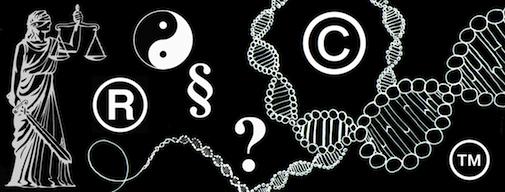
Synthetic Biology and Legal Research
Synthetic biology applies the principles of engineering — abstraction, decoupling and standardization — to the study of biology. This approach is coupled with advances in DNA synthesis, automated strain engineering, and associated technical standardization. In concert these aspects of synthetic biology are greatly changing how genetically encoded functions can be recombined in new ways to design integrated biological systems – with rapid increases in both scale and complexity.
Spurred by the great promises of synthetic biology, both public and private investments in synthetic biology have increased dramatically. The very nature of synthetic biology and the environment in which it is carried out also challenges the traditional intellectual property rights (IPR) - based innovation system. The research carried out within the legal part of the bioSYNergy project will focus on the IPR-related dimension of research and innovation within synthetic biology.
Today, the uses of genetically encoded functions are typically protected and shared via an IPR-based property rights framework. However, many examples exist where the existing IPR-based framework is either being ignored or simply broken. For example, DNA synthesis companies may unknowingly risk trade secret, trademark, copyrights, utility model protection, or patent infringement liability by constructing DNA sequences for their clients.
To spread technology use and to lower product development costs, attempts are being made within the scientific synthetic biology community to implement an open source attitude to the use of the knowledge obtained. The leading open source initiative is the establishment of the BioBricks Foundation (see www.biobricks.org). The idea behind this institution is to provide researchers with open access to a large number of biological parts (bio-bricks). With synthetic biology being a research field that is based on open innovation policies and the emerging market for synthetic biology-based products, several issues regarding IPR need to be addressed. These include among others:
1) How to coordinate the use of open innovation and standardization in basic research with the need to resort to IP protection in the commercial phase of the innovation processes?
2) To what extent should it be possible to patent inventions that were based on resources subordinate to private forms of intellectual property assignment such as open innovation contracts, agreements, and community membership rules?
3) Would it be possible to continue with the open innovation policy, which has so far been a characteristic of synthetic biology, without hampering technology transfer to industry and effective product development?
These questions will form the core of the bioSYNergy legal research group's endeavors. There is a pressing need to investigate and frame these important scientific and societal movements into the general legal structures relating to intelligent property, both at national and international level.
Open source movements are private law initiatives, based on contractual arrangements that are primarily legally binding between those involved, and are often not evocable against third parties. Patents are more broadly applicable as giving the patent holder enforceable exclusionary rights, with an essential role in providing incentives to industrial and commercial innovation. As synthetic biology leaves the sphere of the labs and begins to offer solutions that can be used in commercially viable mass distribution products, both private law initiatives and public law instruments require mutual adaptation.
The legal research efforts will also focus on designing or adapting legal tools in order to integrate the bottom-up and open access approaches of synthetic biology with the existing IP legal framework. Private law initiatives need to be developed in such a manner that full compliance and coordination with the public law approach is assured.
At the same time it is vital to understand and respect the multifaceted mechanisms that drive successful innovation and product development, as well as the dynamics and interplay between the public and private sector. On that basis, our research will hopefully help UCPH to develop improved technology transfer tools.
Read more about the Center’s research here: Synbio.ku.dk/research
View the Center’s scientific publication output here

